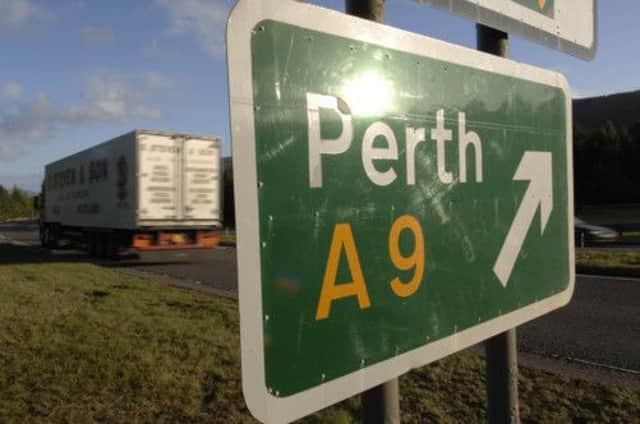Lorry drivers plan ‘roadblock’ protest on A9


Transport minister Keith Brown last week announced that drivers are to have their speed tracked on more than 100 miles of Scotland’s most notorious road in a bid to improve safety.
The organiser of the protest Conor McKenna says he expects at least 80 lorries to join the demonstration that could see major delays to traffic on the Perth-to-Inverness section of the road.
Advertisement
Hide AdAdvertisement
Hide AdThe protestors plan to drive 40mph to highlight the impact of the new camera scheme. Mr McKenna said: “We could work with average speed cameras if the speed limit is raised to 50mph. The average speed cameras are fine on the A77, but that is mostly dual carriageway where lorries can travel at 50mph. The A9 is 80 per cent to 90 per cent two-lane road.”
“We want something that has a big impact,” said McKenna, of Inverness. “It needs to be dramatic to show the government the problems this will cause.”
“These proposals are simply putting a plaster on a bleeding wound and the only way the A9 Safety Group will listen is if something happens,” Mr McKenna continued. “We were not consulted on this matter.
“Costs will go up and it could be a disaster for smaller haulage companies. The A9 Safety Group needs the finger pointing at them as they are just not thinking.”
The scheme involves cameras being sited every four miles over a 136-mile stretch at a cost £2.5 million. It is expected to be operating by next summer to enforce the 60mph single carriageway and 70mph dual carriageway limits on the main route to and from the Highlands.
A Transport Scotland spokesperson said: “The reduction in accidents delivered by average speed camera systems speak for themselves. Since the A77 system was installed in 2005, there has been a 46 per cent reduction in fatal accidents and 35 per cent reduction in serious accidents and we would expect a similar impact on the A9.
“Consideration was given to a pilot increase of the speed limit for HGVs, however records show HGVs are involved in a higher proportion of accidents on single carriageway sections of the A9 than they are on other similar routes and the speed data shows that the majority of HGVs are travelling above the speed limit. Average speed cameras create a level playing field for hauliers and allow other motorists to overtake more safely and within the speed limit.
“Police Scotland have clearly stated they would not support an increase in HGV limits at this time.
Advertisement
Hide AdAdvertisement
Hide Ad“It was agreed that Transport Scotland would continue to monitor the route under the average speed camera system and complimentary road policing strategy and assess whether a pilot speed limit increase for HGVs should be considered in the future.
“The cameras are just one part of a package of engineering, education and enforcement measures to improve safety on the A9.
“More than £50 million has been invested in safety and structural improvements on the route since in the last six years.
“While the Scottish Government believes that dualling will be the long-term solution to the safety issues on the A9 - we are the first administration committed to making the road dual carriageway all the way from Perth to Inverness a reality - we also want to make the immediate improvements that will bring positive changes to driver behaviour.”
Pressure has intensified on Scottish ministers to take action to make the road safer after the latest fatal crash, on 9 July, in which three people were killed on a single-carriageway section near Newtonmore.